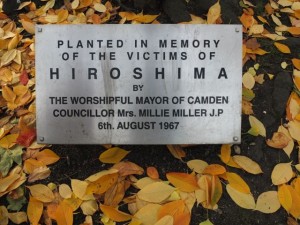“Be the change that you wish to see in the world.”― Mahatma Gandhi
At the end of last year we engaged in a day of walking and learning in order to build resilience, explore this technique as an educational tool and reflect on our approach to leadership and change. The day has continued to resonate with me as a positive learning experience. On the day we visited Temple Church, Bloomsbury parks and medical museums including the Museum of the Order of St John. Here I will expand on what the experience highlighted for me in relation to my approach to leadership and change.
1) Mission: The Order of St John has a long and incredible history. It originated in 11th century Jerusalem and now is known for it’s work with the St John’s ambulance. The order has changed significantly, has global reach and has fought many battles. Throughout, the Order of St John has stayed true to its core mission: ‘The service to the sick is the supreme command’. This simply stated command has and still does drive the Order. It runs deeper than the environment and circumstances of any period and has withstood the radical changes and approaches of the preceding centuries. This has reminded me of my own core principles and those of my institution. To withstand change and be an effective leader we need to be aware of and stay true to our own personal mission and align this with the mission of our institution.
2) Monuments: The parks of Bloomsbury bear testament to many great people and events through plaques, statues, trees or objects. These monuments allow us to celebrate, remember, mourn, admire, reflect. They are physical objects that impact on us because they can be visited and touched. They connect the past with the present and enable us to understand where we are now, where we have been and where we are going. We need monuments as tools of leadership and instruments of change. In our work this is enacted through the awards we give, celebratory, reflective events such as conferences or launch parties, blogs, or posters, displays in our rooms. Perhaps we should consider monuments we can build to help us tackle the defeats and losses as well as the successes and highs.

Plaque in Tavistock Square at the foot of a cherry tree planted in 1967 in memory of the victims of the nuclear bombing of Hiroshima.
3) Creativity: Increasingly I am discovering how vital creativity is to me in the way that I work including leadership and managing change. Creativity gives me energy and new perspectives, enables collaboration and problem solving. By walking, particularly around our local area, I was able to rediscover places, buildings, ideas that I don’t usually notice or explore. This fostered practical, supportive conversations on the day and afterwards. This built up resilience and clarity of thinking. It’s easy to be pulled into the treacle of emails, meetings and every day problems. We need to remember to build in the space and creativity to think differently, rediscover what is front of us and physically move into a new space, get moving in order to gain new perspectives.





Leave a Reply